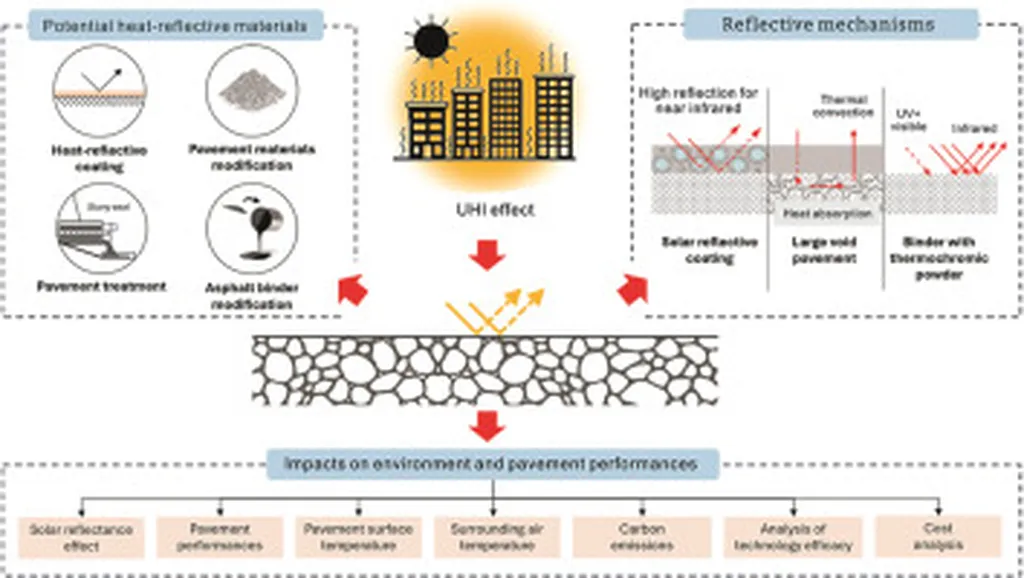In the heart of Xi’an, China, researchers at Chang’an University are pioneering a technology that could revolutionize urban infrastructure and energy efficiency. Led by Xueting Wang from the School of Material Science and Engineering, a team has developed a novel composite microencapsulated phase change material (CMPCM) that could transform asphalt pavements into dynamic tools for urban heat management.
The urban heat island effect is a well-documented phenomenon where urban areas, dominated by asphalt and concrete, absorb and retain heat, making cities significantly warmer than their rural surroundings. This effect not only exacerbates energy consumption for cooling but also contributes to environmental degradation. Wang’s research, published in the journal ‘Cleaner Materials’ (translated as ‘更清洁的材料’), offers a promising solution to this challenge.
The team synthesized CMPCM from methyl methacrylate and SiO2, creating a material that can be integrated into asphalt to form phase change modified asphalt (CMA). This innovation is not just about creating cooler pavements; it’s about enhancing the very properties of asphalt to make it more resilient and sustainable.
“CMPCM remains stable in asphalt and exhibits excellent chemical compatibility with it,” Wang explains. This stability is crucial for the long-term performance of the material in real-world applications. The melting enthalpy of CMA reaches 21.88 J·g−1, indicating strong temperature regulation potential. This means that the material can absorb and release heat effectively, helping to mitigate the urban heat island effect.
The research delves into the rheological behavior of CMA, using dynamic shear rheometer, multiple stress creep recovery (MSCR), and low-temperature bending beam rheometer (BBR) tests. The results are promising. CMPCM increases the complex modulus of asphalt in the low-frequency region, maintaining a relatively stable viscoelastic state. This translates to better performance under varying temperatures and loads.
MSCR test results show that CMA exhibits excellent elastic recovery and low non-recoverable creep compliance between 40 and 50 °C. “This highlights CMPCM’s substantial enhancement of high-temperature deformation resistance,” Wang notes. However, the research also reveals that higher CMPCM content reduces the low-temperature cracking resistance of asphalt. The sweet spot, according to the study, is maintaining CMPCM content between 10–15%, which not only satisfies low-temperature performance requirements but also improves high-temperature deformation resistance.
The implications for the energy sector are significant. By integrating CMPCM into asphalt pavements, cities can reduce the need for artificial cooling, thereby lowering energy consumption and costs. This technology could be particularly beneficial in densely populated urban areas where the urban heat island effect is most pronounced.
Moreover, the research opens up new avenues for sustainable urban development. As cities around the world grapple with the challenges of climate change and energy efficiency, innovations like CMPCM offer a glimpse into a future where infrastructure is not just functional but also environmentally responsible.
Xueting Wang’s work is a testament to the power of interdisciplinary research, combining material science, engineering, and environmental science to address some of the most pressing challenges of our time. As the world continues to urbanize, the need for such innovative solutions will only grow, making this research a critical step forward in the quest for sustainable urban living.
In the words of Wang, “This technology has the potential to reshape our cities, making them cooler, more efficient, and more resilient.” And with the publication of this research in ‘Cleaner Materials’, the world is one step closer to realizing that vision.

